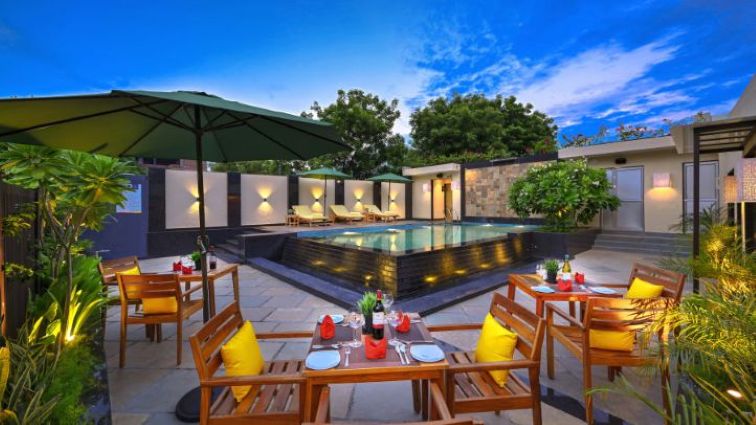How sustainable materials are making waves in hotels

Anil Badan
The world of hospitality is now embracing the concept of eco-friendliness with materials and design strategies. They are investing innovatively in designs to offer a unique and authentic experience, without compromising on aesthetics. The quality and availability of environment-friendly materials for hotel interiors have significantly improved. In response to the increasing demand from consumers for sustainable solutions, designers and manufacturers have created cutting-edge items that satisfy strict environmental regulations while also being aesthetically pleasing and useful. Architects are using such materials in hotel designs, bringing in an upswing in guest experience. Let’s delve into the idea of eco-friendly chic with solutions that elevate the spaces.
Local Sourcing and Recycling Elements
Choosing materials with a low environmental impact is crucial for eco-conscious hotel design. To reduce their carbon footprint, designers are using recycled and locally made materials. Materials like bamboo and cane are being used to create distinctive designs. For example, the Khyber Himalayan Resort in Kashmir complies with sustainable requirements and has an authentic design by using locally sourced wood for flooring and reclaimed wood furnishings.
Bamboo: The Adaptable Wonder of Nature
Bamboo is one of the most adaptable and environmentally friendly materials that is becoming popular in hotel interior design. Bamboo, with remarkable strength and resilience, is well-known for its explosive growth and regenerative qualities. Bamboo is a definite environmental winner because studies have shown that it can trap more carbon dioxide than conventional hardwoods. It is used in a wide range of ways in hotel designs, from wall coverings and ornamental accents to flooring and furnishings.
Biophilic Design and Green Spaces
The strategic integration of green spaces in hotels is the best way to contribute to an eco-friendly design. These help with air purification, better insulation, and reducing the heat island effect, all of which help to provide a healthier indoor atmosphere for visitors. Additionally, the thoughtful integration of these components supports biodiversity, which enhances the hotel’s overall atmosphere. Biophilic design concepts integrate natural elements into the interiors, have become popular in eco-friendly hotel design. This means introducing water features and using natural elements, colours, and patterns.
Innovative Methods & Waste Handling
Waste disposal needs to be planned to meet sustainability goals. By creating efficient waste management programs, such as recycling and composting programs, hotels can lessen their environmental footprint. Hotels are using monitoring systems for a better circular economy to make sure that waste is handled and disposed of in an ethical manner. Additionally, by collaborating with people to create an authentic design, sustainable design seeks to promote community building.
By adopting these eco-friendly trends, hotel designs can lessen their impact on the environment and attract environmentally conscious tourists. Within this area, hotel management can save operational expenses by creating environmentally friendly interior designs. To build more environmentally friendly rooms without compromising comfort and style, the hospitality industry must continue to seek out innovative ideas!
Anil Badan is Founder and Principal Architect, Studio B Architects

